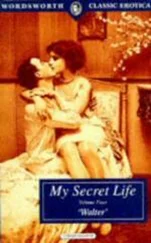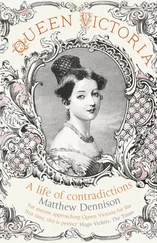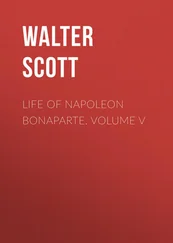Richard Sheepshanks knew the town well because it had a famous observatory, renowned for producing the clearest and most accurate astronomical tables. For many years it had been under the directorship of his close friend, Heinrich Schumacher. Schumacher was an astronomer of international standing, a member of the Royal Society in London, and the editor of Astronomische Nachrichten , the principal journal in the field. 33 And it was with Professor Schumacher and his family that Nelly was sent to stay. The events of 1848 had not been without their effect on the Schumachers. Hostilities had also erupted between Denmark and Prussia over the disputed territory of Holstein, and while the conflict continued the professor’s salary was not paid. Richard Sheepshanks was happy to think that Nelly’s board-and-lodging expenses would contribute to the family coffers. The professor undertook to see to her education, while his wife, his daughter, and the widow of his son, promised to make her welcome. 34
Initially, Nelly’s position in the household was slightly ambiguous. Richard had intimated to Professor Schumacher that, although Nelly was his ‘ward’, she would ‘not improbably’ have to make her own way in the world – perhaps as a governess, that established refuge for portionless but educated Victorian girls. 35 Certainly Richard Sheepshanks’ hopes for his ward’s education suggested such a path. He wanted her to study music and drawing, as well as learning German and mathematics and perhaps even some Latin. But he repeatedly stressed that ‘Nelly’ was to be shown no special consideration, 36 and that if she could be made use of ‘as nurse, amanuensis, housemaid, or [in] any other capacity’ it would be ‘the best education she could have’. 37
Such promptings were unnecessary. Nelly had a generous and helpful disposition. She speedily endeared herself to the Schumachers through her acts of kindness and her expressions of gratitude. She also proved a ready pupil. She learnt, as she put it, ‘to sing very well and to paint very badly. She devoted herself to embroidery and fine sewing. She revealed a gift for languages, learning to speak German ‘like a native’. 38 She also picked up Italian and Danish, though it is not known whether Professor Schumacher found time to teach her any Latin. (He had replied facetiously to Richard Sheepshanks’ suggestion that he might give Nelly some classical education with the French verse: ‘Soleil qui luit le matin,/Enfant qui boit du vin,/Femme qui sait le Latin/Ne viennent jamais a bonne fin.’ * 39 )
The Revd Richard Sheepshanks corresponded regularly with both Nelly and Professor Schumacher and was encouraged by news of her progress. He was able to confirm this good impression when he visited Altona in October 1849. Over the previous year his plans for his ward’s future seem to have grown and developed. And it was perhaps during, or immediately after, this visit that he revealed to Nelly his true position and declared his intention of formally recognizing her as his child. She preserved always, as the one scrap of writing in his hand, a passage from the letter in which he revealed to her his fatherhood: ‘Love me, Nelly, love me dearly, as I love you.’ 40 The scrap is undated, but there is a detectable shift in Richard’s attitude to Nelly after that October; references to her are more open and more openly affectionate; and his letters end with expressions of ‘best love’. 41
If Nelly’s knowledge of modern languages grew chez Schumacher so did her sense of fun and her sense of life’s possibilities. It was a convivial household in a convivial town, and she was surrounded by people of her own age. Altona had a sizeable English population and Nelly formed several long-lasting friendships. There were frequent picnics, concerts, operas, even balls. She made excursions into Italy and Austria. 42 This round of diversion was interrupted at the end of 1850 by Professor Schumacher’s sudden illness and scarcely less sudden death. 43 Nelly, however, had become part of the family by this stage. There was no suggestion that she should leave. She stayed on in the Schumacher household, a companion to the grieving family.
Perhaps it was this family tragedy that introduced her to Professor Schumacher’s son, Johannes. 44 He was the artistic member of the family and had been away, studying painting in Rome. He immediately established a rapport with the family’s English houseguest, a rapport that deepened the following summer when Nelly nursed him through a bout of illness. She shared his love of Nature, and his enjoyment of climbing mountains. He admired her singing. 45 In tandem with his friendship for Nelly, Johannes also developed a close tie with her guardian. Missing his own father, he took to writing to Richard Sheepshanks, seeking his advice, his encouragement and assistance. He even visited him in London in the autumn of 1852. Early in the following year, Johannes wrote from Italy declaring that he planned to leave Rome to continue his studies in Paris. For a painter, he declared, Paris was the place to learn. 46
It was the common cry across the art schools of Europe at the time. Italy might boast the treasures of antiquity and the Renaissance, and the great German academies at Munich, Düsseldorf, Berlin, and Dresden could offer a thorough practical training; but the French capital had the glamour of innovation and even revolt. It was there that the new spirit of ‘Realism’ was asserting itself with most force: at the Salon of 1850, Gustave Courbet had struck a new note with his monumental canvas The Stonebreakers . The depiction of the contemporary working man on the heroic scale of antiquity caused a sensation that others were keen to experience and to echo. Students gravitated to Paris from all over Europe and America, to throng the ateliers of Troyan, Gleyre, Couture, and Lecoq de Boisbaudran, hangar-like studios bristling with easels, plaster-casts and ambitions. Johannes Schumacher was not the only son of Altona to be drawn to Paris. He found several others already there. Amongst his confrères was an earnest young art student called Oswald Adalbert Sickert.
Oswald Sickert belonged to Altona’s artistic elite. His father, the dashing fair-haired, blond-bearded Johann Jürgen Sickert, was a pillar of the cultural community: an artist, wit, and dandy who – despite his Nordic colouring – was known to at least some of his friends by the Italianate nickname, ‘Sickarto’. 47 The son of a long line of Flensborg fishermen, he had trained as a ‘decorative painter’ and was – at least according to his grandson – for a while the ‘head of a firm of decorators who were employed in the royal palaces of Christian VIII of Denmark’. 48 He became, in time, an accomplished landscape painter, and after moving to Altona in the late 1820s was a leading member of the town’s exhibiting society. He showed there regularly, and also at the neighbouring Hamburg Kunstverein. 49 He was interested in technical innovations and was a pioneer of both lithography and photography. In 1850 the local directories list his address – at 34 Blücherstrasse – as a ‘studio of Daguerreotype’. * 50
Nevertheless, he did not abandon his first calling. He continued to undertake decorative commissions: the museum in the town still contains a painted ‘overdoor’ by him of a woman with flowers. In 1855 – at the request of the municipality – he drew up a scheme for providing art training for the town’s artisans through ‘Sunday Continuation classes’. In it he emphasized the practical benefits and applications of art, insisting on a thorough grounding in geometry and perspective. He considered that it would be ‘of more use to a carpenter, a turner or a smith, if his lessons enable him to draw a vase or an ornament correctly, than if his schooling results in nothing more than the adornment of his bedroom with a few trophies’. 51 But if Johann Jürgen thought that art could be useful he also believed that the artist’s life should be fun. He was a great promoter of artistic conviviality – a composer of drinking songs and comic verses, and a leading light in the Altona dining society known as the ‘Namenlosen’ or the ‘Unnamed’, all the members of which were designated only by numbers. 52
Читать дальше












